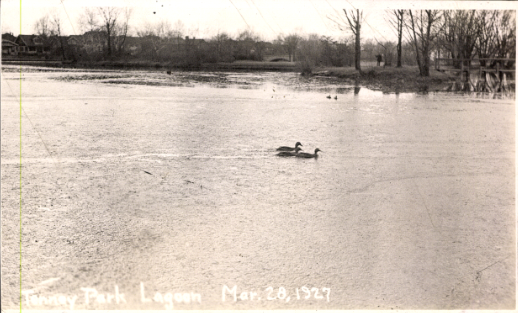“Flow of history: Land treatment vs. chemical treatment” is the fourth article in a series outlining the history of wastewater treatment in Madison from the mid-1800s through 1914. Earlier articles are available in the History section of our blog, beginning the series with Flow of history: Early concerns prompted community action.

By Paul Nehm
Near the end of 1895, the Madison City Council had approved the issuance of a bond to build a chemical and filtration system treatment plant, but further delays occurred.
At the start of the 1896 construction season, three University of Wisconsin professors asked to address the Council to argue for a land disposal system. N.O. Whitney, professor of engineering, Charles S. Slichter, professor of mathematics, and Charles R. Van Hise, professor of geology made the case that the land disposal system would be less costly to build and operate than the precipitation/filtration system. Furthermore, the professors claimed that the chemical and filtration system would discharge twice as many nutrients into the lakes. They asked that a cost comparison be made between the two systems.
In response, the Council created a committee to make the cost comparison. Although the majority of committee members supported the land disposal method, it was found that it would cost $100,000 while the precipitation/filtration plant would cost about $80,000. Based on these findings, the Council decided to accept the precipitation/filtration plan. Plans and specifications for such a system were completed in February 1897.
However, proponents of the land disposal system continued to argue for its adoption. Following two well-attended meetings in which the majority of those present supported the land disposal system, the Council created an expert committee to determine if there was enough suitable land available for the land disposal system within a four-mile radius of the city. That group drilled 440 holes and found only 25 acres of suitable land, much less than was needed. In August 1897, the Council then told the city engineer to proceed with the chemical precipitation/filtration plant.
In early October 1897, a new player entered the discussion. While engineers McCellan Dodge and John Nader were performing soil borings on the chemical/filtration plant site, they were approached by Mr. John MacDougall, the managing director of the American Sanitary Engineering Company. MacDougall’s company had the patent rights to the “International Process” which used two chemicals, ferozone and polarite, to treat wastewater.
MacDougall claimed that his process was much more efficient than other chemical treatment processes and that the effluent was clear, tasteless, odorless and would not kill fish. His plant could supposedly handle twice as much wastewater as the plant that was being planned and would only cost $37,200 to build. MacDougall also said his company would operate the plant free of charge for three months. Claiming that this process was operating in England, India, South Africa and Australia, he was willing to install the plant below cost in order to have a plant in the United States to use as a model. City leaders now had another decision to make.
Much of the information for the article series was found in “Madison – A History of the Formative Years” by David V. Mollenhoff and in articles written by early leaders from Madison’s public works sector. The article was originally published in the Fall 2020 edition of the District’s newsletter, The Clarifier.






